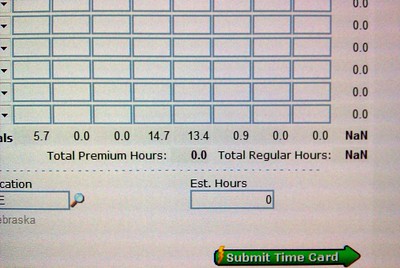A new release by the Bureau of Labor Statistics reports that wages and salaries for workers in the private sector averaged $30.33 per hour. Annualized that’s $63,086. You might notice that figure doesn’t come close to the average hourly wage of a community college graduate. And according to data collected by the Community College Research Center, only one associate degree program at WCC enabled graduates to earn an hourly wage that’s considered “average” in private industry.
The average hourly wage of WCC graduates who earn in the top third is about $25. For those who earn in the middle tier, the average hourly wage is less than $16.50. For WCC graduates in the bottom third of wage earners, the average hourly wage is less than $13.
The cost of a community college education is only a problem because the average graduate can’t count on making more than about $37,500 per year. When you have bills to pay, that’s simply not enough. It should come as no surprise that community colleges – like Washtenaw – are having a hard time selling the Community College Dream.
The data underscore the real need to eliminate programs that lead to low wage occupations and focus on creating new programs (and promoting existing ones) that lead students into high wage jobs. I have said this before, but the public policy implications of a publicly funded institution promoting and encouraging students to train for low-wage careers are stunning.
When the goal is to get people to accumulate more college credits, the reward needs to be better than $18 per hour. You can’t ask people to go into the classroom and forgo time that they could have spent with their families or on activities that are personally meaningful for them for $18.
Community college programs need to reflect hourly wage data
The community college wage gap isn’t getting better. Private sector employee wages aren’t declining. There is no glut of unemployed workers looking for jobs. Right now, the US economy has logged the 25th consecutive month with unemployment below 4%. That’s the longest consecutive monthly low-unemployment streak since the 1960’s. In other words, there is no pressing reason to enroll in a community college program right now.
If community colleges are going to compete with the workforce for students, their administrators need to pull together a plan to offer degree programs for high-wage jobs immediately. And the definition of high wage needs to reflect the average hourly earnings data that the BLS has collected. If it means dropping low-wage programs in favor of higher ones, so be it. If it means canceling low-wage programs that local employers “depend” on to fill vacant positions, then that’s what it means.
A community college’s focus should be on ensuring that graduates can take jobs in high wage industries. Those institutions that fail to prioritize student earnings will see their enrollment plunge.
And rightly so.
Photo Credit: Paul Heaberlin , via Flickr















